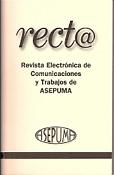Analyzing a macroprudential instrument during the COVID-19 pandemic using border collision bifurcation
DOI:
https://doi.org/10.24310/recta.22.2.2021.19881Keywords:
Macroprudential policy, Loan dynamics, Border collision bifurcation, COVID-19Abstract
Bank Indonesia, the central bank of Indonesia, has made adjustment settings in a macroprudential policy instrument called macroprudential intermediation ratio (MIR) to boost loan growth in the context of national economic recovery due to the COVID-19 pandemic. In this paper, a dynamic model of bank loan with procyclicality behavior is developed, and it is equipped with the predecessor of the MIR instrument called loan-to-deposit ratio based reserve requirement (LDR-RR). We examine the effects of LDR-RR parameters on the dynamics of loan using the border collision bifurcation analysis to determine the threshold values of the LDR-RR parameters so that the stability of loan equilibrium can be maintained. This model is applied to monthly data of Indonesian commercial banks before and during the COVID-19 pandemic to assess the stability region of the instrument parameters.
Downloads
Publication Facts
Reviewer profiles N/A
Author statements
Indexed in
-
—
- Academic society
- N/A
- Publisher
- UMA Editorial. Universidad de Málaga
References
Ansori, M. F. (2021). Mathematical Model and Its Application for Analyzing Macroprudential Instrument in the Banking Industry. PhD Thesis, Institut Teknologi Bandung. (in Indonesian)
Ansori, M. F., Sidarto, K. A., & Sumarti, N. (2019a). Logistic models of deposit and loan between two banks with saving and debt transfer factors. AIP Conference Proceedings, 2192, 060002.
https://doi.org/10.1063/1.5139148
Ansori, M. F., Sidarto, K. A., & Sumarti, N. (2019b). Model of deposit and loan of a bank using spiral optimization algorithm. J. Indones. Math. Soc., 25(3), 292- 301.
https://doi.org/10.22342/jims.25.3.826.292-301
Ansori, M. F., Sidarto, K. A., Sumarti, N., & Gunadi, I. (2021a). Dynamics of Bank's Balance Sheet: A System of Deterministic and Stochastic Differential Equations Approach. International Journal of Mathematics and Computer Science, 16(3), 871-884.
Ansori, M. F., Sumarti, N., Sidarto, K. A., & Gunadi, I. (2021b). An algorithm for simulating the banking network system and its application for analyzing macroprudential policy. Computer Research and Modeling, 13(6), 1275-1289.
https://doi.org/10.20537/2076-7633-2021-13-6-1275-1289
Bank Indonesia (2021). Instrumen Kebijakan Makroprudensial. Accessed in August 25, 2021 from https://www.bi.go.id/id/fungsi-utama/stabilitas-sistem-keuangan/instrumenmakroprudensial/default.aspx.
Bank Indonesia Press Conference (2021). Lampiran 1 Siaran Pers Bank Indonesia No. 23/68/DKom Penguatan Kebijakan Rasio Intermediasi Makroprudensial dan Rasio Intermediasi Makroprudensial Syariah (RIM/RIMS).
Bank Indonesia Regulation (2019). Peraturan Bank Indonesia No. 21/12/PBI/2019 tentang Perubahan atas Peraturan Bank Indonesia No. 20/4/PBI/2018 tentang Rasio Intermediasi Makroprudensial dan Penyangga Likuiditas Makroprudensial bagi Bank Umum Konvensional, Bank Umum Syariah, dan Unit Usaha Syariah.
Bathaluddin, M. B., Adhi, N. M., & Wahyu, A. W. (2012). Dampak persistensi ekses likuiditas terhadap kebijakan moneter. Buletin Ekonomi Moneter dan Perbankan, 257-282.
https://doi.org/10.21098/bemp.v14i3.359
Bischi, G.-I., Chiarella, C., Kopel, M., & Szidarovszky, F. (2010). Nonlinear Oligopolies: Stability and Bifurcations. Springer-Verlag, Berlin.
https://doi.org/10.1007/978-3-642-02106-0
Brianzoni, S. & Campisi, G. (2021). Dynamical analysis of a banking duopoly model with capital regulation and asymmetric costs. Discrete and Continuous Dynamical Systems - B.
https://doi.org/10.3934/dcdsb.2021116
Elsadany, A. A. (2010). Dynamics of a delayed duopoly game with bounded rationality. Mathematical and Computer Modelling, 52(9-10), 1479-1489.
https://doi.org/10.1016/j.mcm.2010.06.011
Elsadany, A. A. (2017). Dynamics of a Cournot duopoly game with bounded rationality based on relative profit maximization. Applied Mathematics and Computation, 294, 253-263.
https://doi.org/10.1016/j.amc.2016.09.018
Fanti, L. (2014). The dynamics of a banking duopoly with capital regulations. Economic Modelling, 37, 340-349.
https://doi.org/10.1016/j.econmod.2013.11.010
Freixas, X. & Rochet, J. (2008). Microeconomics of Banking, Edisi Kedua. MIT Press, Masachusetts.
Governors Board of Bank Indonesia Regulation (2021). Peraturan Anggota Dewan Gubernur No. 23/7/PADG/2021 tentang Perubahan Ketuga atas Peraturan Anggota Dewan Gubernur No. 21/22/PADG/2019 tentang Rasio Intermediasi Makroprudensial dan Penyangga Likuiditas Makroprudensial bagi Bank Umum Konvensional, Bank Umum Syariah, dan Unit Usaha Syariah.
Gunadi, I. & Harun, C. A. (2011). Revitalising reserve requirement in banking model: An industrial organisation approach. SEACEN Occasional Papers, (51).
Josaphat, B. P., Ansori, M. F., & Syuhada, K. (2021). On Optimization of Copula-based Extended Tail
Value-at-Risk and Its Application in Energy Risk. IEEE Access. doi: 10.1109/ACCESS.2021.3106715.
https://doi.org/10.1109/ACCESS.2021.3106715
Kahou, M. E. & Lehar, A. (2017). Macroprudential policy: A review. Journal of Financial Stability, 29, 92-105.
https://doi.org/10.1016/j.jfs.2016.12.005
Klein, M. A. (1971). A theory of banking firm. Journal of Money, Loan, and Banking, 3, 205-218.
https://doi.org/10.2307/1991279
Monti, M. (1972). Deposit, loan, and interest rates determination under alternative objective functions, in Szego, G. P. and Shell, K., eds. Mathematical methods in investment and finance, Amsterdam.
Otoritas Jasa Keuangan (2021). Statistik Perbankan Indonesia. Retrieved from https://www.ojk.go.id/id/kanal/perbankan/data-dan-statistik/statistik-perbankanindonesia/Default.aspx (accessed August 22, 2021).
Satria, D., Harun, C. A., & Taruna, A. (2015). The macro-prudential aspects of loan-to-deposit-ratio-linked reserve requirement. Applied Economics, 48(1), 24-34.
https://doi.org/10.1080/00036846.2015.1073840
Sidarto, K. A. & Kania, A. (2015). Finding all solutions of systems of nonlinear equations using spiral dynamics optimization with clustering. J. of Advanced Computational Intelligence and Intelligence Informatics (JACIII), 19(5), 697- 707.
https://doi.org/10.20965/jaciii.2015.p0697
Sumarti, N., & Gunadi, I. (2013). Reserve Requirement Analysis using a Dynamical System of a Bank based on Monti-Klein model of Bank's Profit Function, arXiv.org.
Sumarti, N., Nurfitriyana, R., & Nurwenda, W. (2014). A Dinamical System of Deposit and Loan Volumes based on the Lotka-Volterra Model, AIP Conference Proceedings 1587, 92.
https://doi.org/10.1063/1.4866541
Sumarti, N., Fadhlurrahman, A., Widyani, H., & Gunadi, I. (2018). The dynamical system of the deposit and loan volumes of a commercial bank containing interbank lending and saving factors. Southeast Asian Bulletin of Mathematics, 42, 757-772.
Tamura, K. & Yasuda, K. (2011). Spiral dynamics inspired optimization. J. of Advanced Computational Intelligence and Intelligence Informatics (JACIII), 15(8), 1116-1122.
https://doi.org/10.20965/jaciii.2011.p1116
Wijayanti, R., Adhi, N. M., & Harun, C. A. (2020). Effectiveness of macroprudential policies and their interaction with monetary policy in Indonesia. BIS Paper, (110), 31-50.
Wong, C. H. (2011). Border Collision Bifurcations in Piecewise Smooth Systems. PhD thesis, The University of Manchester.
Downloads
Published
How to Cite
Issue
Section
License

This work is licensed under a Creative Commons Attribution-NonCommercial 4.0 International License.









